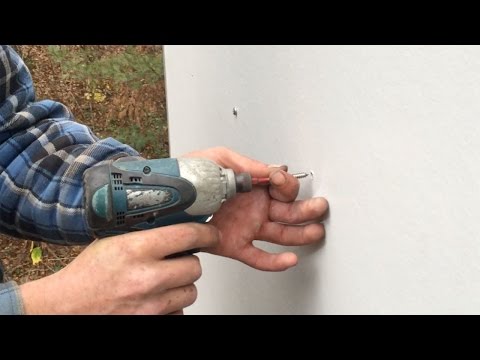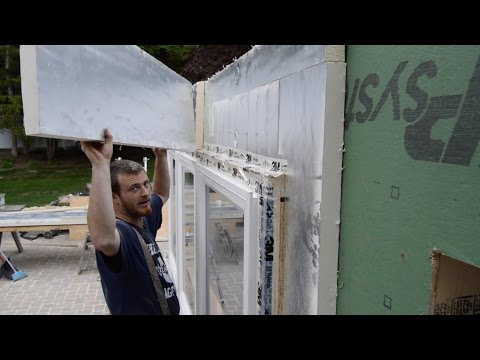Old walls are wavy. Old walls with a lot of foam on them are easy to make flat.
Another segment in our ongoing series documenting a deep energy retrofit that includes exterior foam, innie window installation, and lap siding basics on the job with Synergy Construction.
OFFICIAL TRANSCRIPT:
Siding installation is one of the last steps in any remodeling project, including this energy retrofit and gut rehab. The siding on this house will be fastened to furring strips that are screwed through the foam and into the studs.
The furring strips provide a drainage cavity for the siding, but they are not always flat. If fact, they're never flat. You always have to adjust them in, out, or both.
The walls can be wavy because the foam compresses as you fasten it to the wall with the furring strips. It doesn't make sense to try to straighten it as you go because wood moves, things shift, and you'll always need to adjust it before installing siding anyway.
But first things first
The guys go around the house making sure there is enough backing for siding at windows, doors, soffits, corners. Then, they turn to straightening the walls. Sometimes it is a small matter of tightening up a little bit, or adding a screw here and there. Sometimes it is a bigger issue requiring shims. And sometimes the dips happen right where you don’t want them to.
David seems pretty cool and collected, but if you want to get him going, waste his expensive screws.
"You might not know this about me, but I can't stand when a screw is in the wall and there's a piece of strapping over it ...
... we've talked about this, haven't we PJ?"
Those six-inch structural screws cost about 25 cents each and they can really eat up a siding budget if you're not careful.
When the strapping is mostly straight, they roll up the string line and break out a straight edge to dial it in a few key spots—Like where the engineer-homeowner will gaze as he enjoys a cold beer on his back deck.











